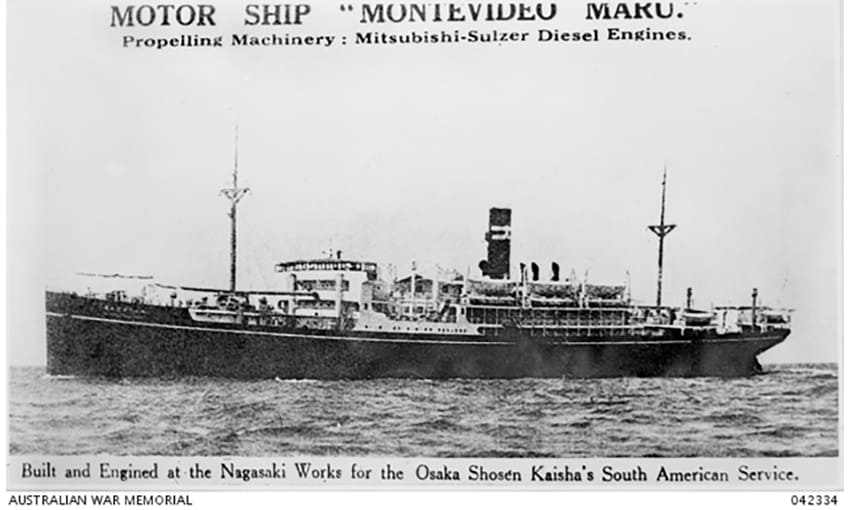THE Japanese merchant ship SS Montevideo Maru was torpedoed off the coast of the Philippines on 1 July 1942 during World War II. The sinking has been described as the worst maritime disaster in Australian history – the ship went down with around 979 Australian troops and civilians on board.
Unbeknown to the submarine USS Sturgeon, the Montevideo Maru was transporting about 1060 prisoners of war from 16 countries when it sailed from the former Australian territory of New Guinea. It was not marked as carrying prisoners. It sank in 11 minutes.
The number and identity of those who perished were not fully known until after the war, but the location of the shipwreck remained a mystery. But on 18 April this year – more than 80 years after the disaster – an expedition team found the wreck off the Philippines, bringing closure to the mystery and to the families of those who died.
ANATOMY OF AN EXPEDITION
The expedition that located the wreck of Montevideo Maru was led by Silentworld Foundation, Dutch company Fugro and deep-sea survey specialists, with support from Australia’s Department of Defence.
Silentworld Foundation is a maritime history not-for-profit helmed by John Mullen and based in Sydney. It had taken the foundation nearly five years of planning to assemble the expedition team, and 20 years of work from the Montevideo Maru Society which pushed for national recognition of the disaster.
The search began on 6 April 2023 in the West Philippine Sea. The project team detected the wreck 12 days later at a depth of 4000 metres.
On 28 September 2023 Maritime Industry Australia (MIAL) held a special breakfast at the Jones Bay Wharf in Sydney, marking World Maritime Day with a presentation on the discovery of Montevideo Maru.
Max Uechtritz, a filmmaker who documented the discovery of the wreck alongside cinematographer Neale Maude, shared technical information from the search and poignant details from the outcome. Mr Uechtritz is a former foreign correspondent and news executive born in Rabaul, where the Australians aboard the Montevideo Maru were captured.
SCALE OF THE TRAGEDY
Mr Uechtritz said almost twice as many Australians died in the Montevideo Maru incident than in the Vietnam War.
“It was our greatest maritime disaster, despite the mystery of it. It was a mystery for so many years, and that has driven people like myself and others to make it more well known,” he said.
“Some years ago, in 2003 [as director of news and current affairs at ABC] I found the only survivor ever to talk about it. He was a Japanese seaman, a sailor who was on board. He was in his nineties, but we’ve got him on tape talking about the Australians’ death cries … he said they were drowning in hot oil and seawater.
“Some Australian mates who had been on the deck and in the sea hanging onto logs which had been there for firewood … they heard the death cries of their mates and started singing ‘Auld Lang Syne’.
“The moment of that ship going down, families cascading down through generations didn’t know what had happened. They didn’t know until 1946 – some of them were sending Red Cross parcels to where they thought their fathers and sons and brothers and uncles were.”
THE DISCOVERY
The expedition began on the Dutch research vessel Fugro Equator. Mr Uechtritz said the vessel was also used to solve the mystery of the submarine HMAS AE1 which disappeared in 1914. It was also involved in the search for the missing MH370 aircraft.
The positive sighting of Montevideo Maru was recorded using sophisticated technology including an autonomous underwater vehicle with in-built sonar.
Mr Uechtritz outlined the challenges of locating the wreck in a large expanse of ocean and analysing the data.
“Luckily, there weren’t ravines. That was the best thing that we discovered, that there were no ravines, because it would have been almost impossible to find. It was just a flat surface.”
The Montevideo Maru project team worked from what Mr Uechtritz called the war room – an onboard workspace filled with computers, diagrams of the ship and historic photos and stories of the casualties.
“We put them all up on the walls so they were a presence there for the whole trip.”
Silentworld Foundation broke the news of its discovery shortly before ANZAC Day 2023. In a statement dated 22 April, director Mr Mullen said the discovery of Montevideo Maru had closed “a terrible chapter” in Australian military and maritime history.
“Families waited years for news of their missing loved ones, before learning of the tragic outcome of the sinking,” he said. “Some never fully came to accept that their loved ones were among the victims. Today, by finding the vessel, we hope to bring closure to the many families devastated by this terrible disaster.”
Mr Uechtritz the disaster had overcome more than 81 years of neglect in a single day.
“Media neglect, historical neglect, from our historians and, dare I say it, sadly from the Australian War Memorial,” Mr Uechtritz said.
“It was neglected for so long, shamefully. How could a country not know its greatest maritime disaster?”
This article appeared in the November 2023 edition of DCN Magazine







